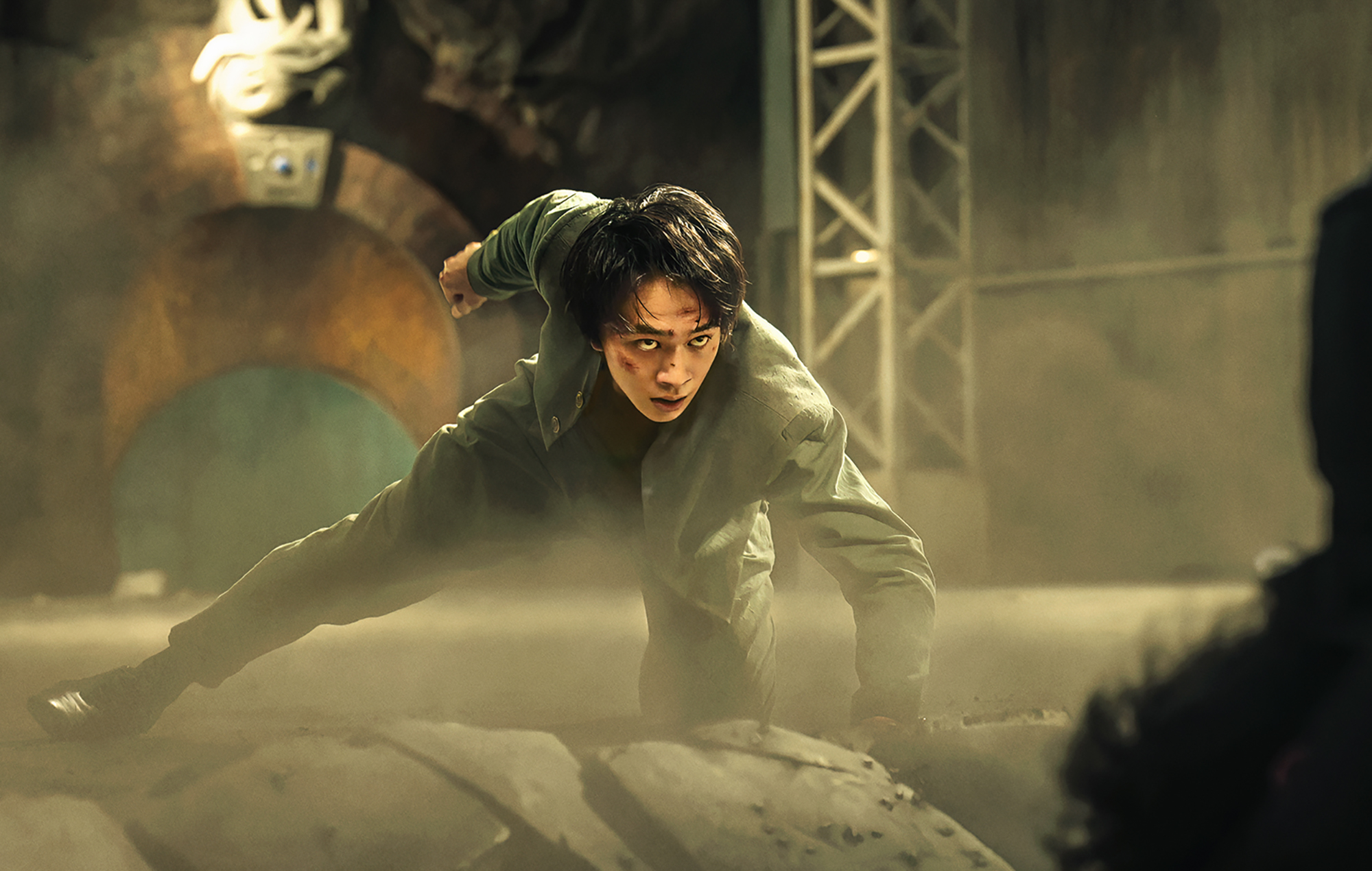Japan has a rich history of manga and anime works considered masterpieces. One of the more underrated among those is Yu Yu Hakusho, which debuted in manga form in 1991 and in anime a year later. This cult classic by Yoshihiro Togashi tells the story of Yusuke Urameshi, a delinquent teenager who dies but is resurrected on the condition that he serves as a Spirit Detective, an agent of the spirit world that hunts renegade demons who threaten peace on Earth.
Now, Yu Yu Hakusho is finally receiving its first-ever attempt at a live-action adaption courtesy of Netflix, which is out today (December 14). It might be 30 years after its debut, but the story remains “universal”, director Sho Tsukikawa tells NME ahead of the series’ premiere in Tokyo. “Even though it’s set in Japan, fans around the world can relate to its themes of good versus evil and moments of character growth.”
The team behind Netflix’s Yu Yu Hakusho faced the gargantuan task of condensing four volumes of manga into a five-episode series that runs under six hours. It’s a daunting feat, especially after the stellar first season of Netflix’s One Piece earlier this year – though the Yu Yu Hakusho team didn’t feel pressured by that, says Tsukikawa. “I think the pressure stemmed more from making something that would be able to meet a global standard, not just appeasing a Japanese audience.”
Ryo Sakaguchi (left) and Sho Tsukikawa (right). Credit: Netflix
This “global standard” Tsukikawa speaks of doesn’t just relate to the storytelling and action scenes, but also to visual effects. To bring Yu Yu Hakusho to life, Tsukikawa and Netflix enlisted the Hollywood-famous VFX studio Scanline. Scanline’s Ryo Sakaguchi – who has worked on Game Of Thrones, Tron: Legacy, Marvel’s Eternals and more – serves as Yu Yu Hakusho’s VFX supervisor.
Yu Yu Hakusho’s development is ground-breaking for Japan’s TV industry, Sakaguchi says, which could not previously handle the VFX of such a production. While work was done in Japan, Sakaguchi’s Hollywood team also provided support for the series.
“This was a worldwide effort and the IP is difficult, even for the standard where I work, which is North America. So I think now, technology globally has finally reached the capabilities where we’re confident that it can bring the world of Yu Yu Hakusho to life.”
And it shows. Visually, Yu Yu Hakusho is a massive achievement – not just for an anime adaptation but for what can be portrayed in TV series now. Flashy fight scenes in its first episode that elicit feverish reactions from the audience at the Japan premiere turn out to be among the tamest in the show. As the series goes on and as our heroes develop their powers, the battles – which will thrill any diehard fan – take up a bulk of the show’s five-episode runtime.
“Even though Yu Yu Hakusho is set in Japan, fans around the world can relate to its themes of good versus evil and moments of character growth” – Sho Tsukikawa
But through all the long and intense fight scenes, action still isn’t the centerpiece of Yu Yu Hakusho. Instead, its narrative is driven by convincing emotional performances from the main cast. That includes Kazuma Kuwabara (played by Shuhei Uesugi), a hotheaded troublemaker who – light spoiler alert – constantly leads his friends into fights they didn’t ask for and severe injuries they can’t manage. Over the course of the series, he sees how much pain he has caused those around him and does all he can to atone for it.
Poignant character growth was important to give an action-packed show “emotional context”, Tsukikawa explains. “We didn’t want the action scenes to be there for the sake of it,” he says.
“We wanted to have reasons for why these people were fighting with one another. We didn’t want to lose that fundamental point, which is that people fight when they get emotional, especially if you’re defending or protecting something.”
Yu Yu Hakusho does a lot within its five-episode run. Though it was originally discussed as a three-season series, it was ultimately cut down due to budgeting and production timelines, Tsukikawa tells NME.
Though the director and his team pay homage to the source material, their adaptation isn’t an identical remake. “The story pulls from different arcs in the manga and anime so the story might not be exactly what fans remember, but the characters are pretty much exactly what you’d imagine them to be like,” he says.
Meiko Kaji as Genkai in Netflix’s ‘Yu Yu Hakusho’. Credit: Netflix
One such beloved character is Genkai, an elderly chi master who serves as Yusuke’s mentor – here portrayed by the legendary Meiko Kaji, who the creators knew they wanted for the role.
“She’s always been great with action, so we knew right away that we wanted her for the role of Genkai,” says Tsukikawa. Sakaguchi adds: “She has such a recognisable face. We grew up watching her, and creatively she’s so experienced and we just wanted the chance to work with her.”
Tsukikawa is such a fan of Kaji’s that he referenced two of her most iconic works for her role as Genkai: “There’s a scene in Yu Yu Hakusho in which she appears when she’s younger. My vision for that scene in particular was to draw from her performances in Lady Snowblood and Female Convict Scorpion.”
“Meiko Kaji has always been great with action, so we knew right away that we wanted her for the role of Genkai” – Sho Tsukikawa
It’s fitting that Meiko Kaji would grace this reimagining of Yu Yu Hakusho: both are veteran icons that have propelled their respective industries forward, but are now being introduced to a whole new audience and generation who might not have paid attention before.
To this end, Sakaguchi poignantly notes of Yu Yu Hakusho: “We’re fans and we feel like it was our responsibility to deliver the best version of this to other fans as well. We feel like we’ve done this.”
Yu Yu Hakusho is now streaming exclusively on Netflix
The post ‘Yu Yu Hakusho’: inside the re-emergence of an iconic ’90s anime appeared first on NME.




